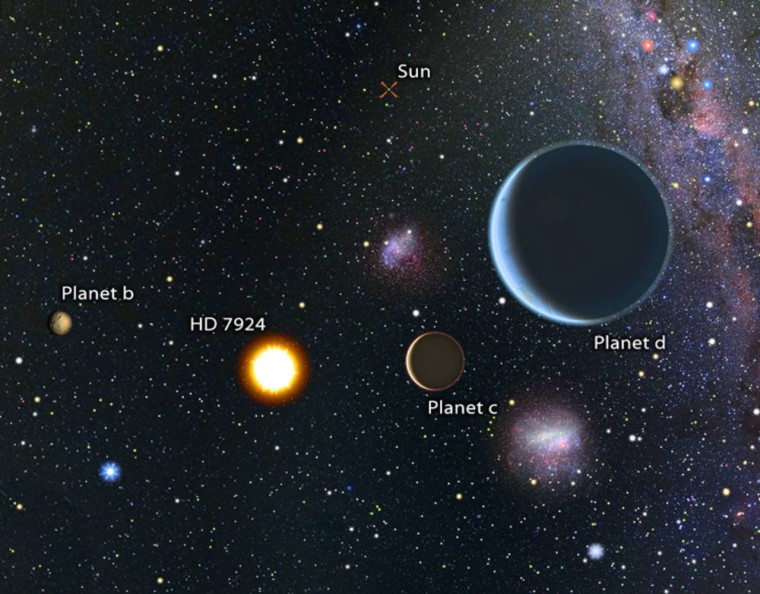Astronomers have discovered two new alien worlds a bit larger than Earth circling a nearby star.
The researchers said the newfound exoplanets, known as HD 7924c and HD 7924d, are "super-Earths" with masses about 7.9 and 6.4 times greater, respectively, than that of our home planet. The planets orbit the star HD 7924, which lies just 54 light-years from the sun — a mere stone's throw, considering the size of the Milky Way, which is on the order of 100,000 light-years wide.

The discovery brings the number of known planets in the HD 7924 system to three. (Another super-Earth, called HD 7924b, was spotted there in 2009.) HD 7924b, HD 7924c and HD 7924d all lie closer to their host star than Mercury does to the sun. They complete one orbit in five, 15 and 24 days, respectively, researchers said. [The Strangest Alien Planets]
"The three planets are unlike anything in our solar system, with masses seven to eight times the mass of Earth and orbits that take them very close to their host star," study co-author Lauren Weiss, a graduate student at the University of California at Berkeley, said in a statement.
The research team discovered HD 7924c and HD 7924d using three different ground-based facilities — the Automated Planet Finder Telescope at Lick Observatory in California, the Keck Observatory in Hawaii and the Automatic Photometric Telescope at Fairborn Observatory in Arizona. (Keck also found HD 7924b in 2009.)
The research team, which was led by University of Hawaii graduate student BJ Fulton, used the combined observations of the three telescopes to detect tiny wobbles in the star HD 7924 caused by the gravitational pull of the two newfound planets, and then to verify the worlds' existence.
The APF Telescope was recently revamped to make it fully robotic, and it now searches the skies for exoplanets without human oversight — a key milestone in the ongoing exoplanet hunt, researchers said.
This is a condensed version of a report from Space.com. Read the full report. Follow Mike Wall on Twitter and Google+. Follow Space.com on Twitter, Facebook or Google+.